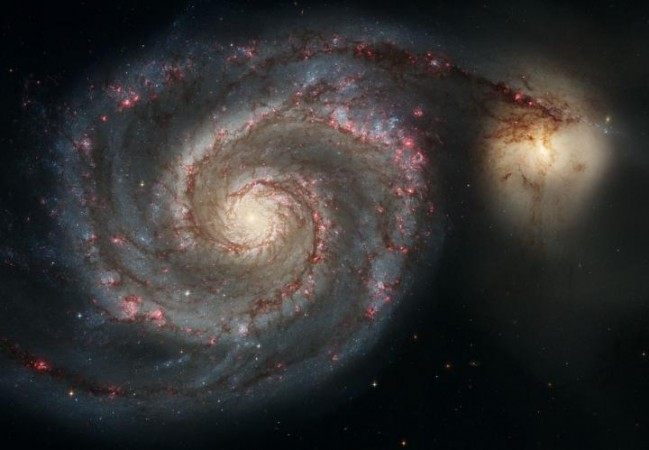
A team of astronomers recently learned that Milky Way is already in the process of colliding and merging with another galaxy. The astronomers made the discovery after finding evidence that Milky Way has already started devouring several smaller galaxies.
Aside from Andromeda, astronomers revealed that the Milky Way is also on a collision course with a massive dwarf galaxy known as the Large Magellanic Cloud (LMC). The LMC appears as a large cloud containing smaller galaxies.
According to astronomers, the LMC is about 1,63,000 light-years from Milky Way. It approached the galaxy's vicinity at about 1.5 billion years ago. Originally, it was expected that the LMC will collide with Milky Way in 2 billion years.
However, after analyzing the data collected by the European Space Agency's Gaia Space Telescope, a group of astronomers learned that Milky Way and the LMC have already started to merge, CNN reported.
The astronomers came to this conclusion after discovering two bright galaxies known as Fornax and Carina as well as four faint dwarf galaxies inside Milky Way. They noted that these six small galaxies once belonged to the LMC.
The latest discovery indicates that Milky Way, which is more massive than the LMC, is pulling away galaxies from the latter using its powerful gravitational pull.
Laura Sales, one of the study's co-authors and an assistant physics professor at the University of California, noted that the discovery indicates both the Milky Way and the LMC structures were very different billions of years ago before they started merging with one another.
"If so many dwarfs came along with the LMC only recently, that means the properties of the Milky Way satellite population just 1 billion years ago were radically different, impacting our understanding of how the faintest galaxies form and evolve," Sales said according to CNN.
Ethan Jahn, Sales' colleague, pointed out that due to the high number of dwarf galaxies inside the LMC, the Milky Way could be going through the biggest galactic merger in its history.
"The high number of tiny dwarf galaxies seems to suggest the dark matter content of the LMC is quite large, meaning the Milky Way is undergoing the most massive merger in its history, with the LMC, its partner, bringing in as much as one third of the mass in the Milky Way's dark matter halo -- the halo of invisible material that surrounds our galaxy," Jahn said.
The findings of the astronomers were presented in a new study published in the Monthly Notices of the Royal Astronomical Society.








